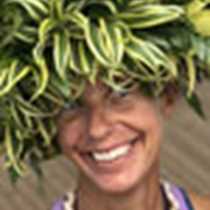Hinlopen Strait
This morning we awoke with National Geographic Explorer off the northeast coast of Spitsbergen Island in the company and commotion of thousands of seabirds. Cruising beneath the cliffs of dolerite-intruded limestone at Kapp Fanshawe was an avian experience we will long remember. Literally thousands of Brunnich’s guillemots swarmed like bees above and below as they surfaced from their pursuit diving and found space from otherwise crowded ledges. Pelagic seabirds, they come to roost but once a year on land to have their chicks and while we looked for their pyriform (pear) shaped eggs the parents protected their progeny with the warmth of their brood patches and their backs to the enemy (the lurking glaucous gulls). Scattered about we could also see black legged kittiwakes and their nests scattered about the cliffs as well as the occasional barnacle goose.
Further on down Hinlopen Strait we headed for the wind blown and barren beaches of Nordaustlandet, the second largest island in the archipelago. With ¾’s of the island being covered in ice and the influences of the transpolar current we clearly felt a world apart from the western fjords (and gulf stream influence) of Spitsbergen Island. Raised beaches and stranded driftwood from Siberia helped to paint a picture of this islands glacial past and geography in the circumpolar north. Ancient whalebones found over 100’ higher than the present shoreline are testament to the rising of the Earth’s crust and isostatic rebound after ice retreated from the Austfonna icecap. Down along the beach we were rewarded with walrus at eye level as three males slumbered in a pile of large teeth and tonnage.
Exploring eastern shores of Spitsbergen Island we spent the afternoon searching for Ursus maritimus along fast ice clinging to the shores. Not only were we rewarded with a few distant sightings but a walrus on ice!




